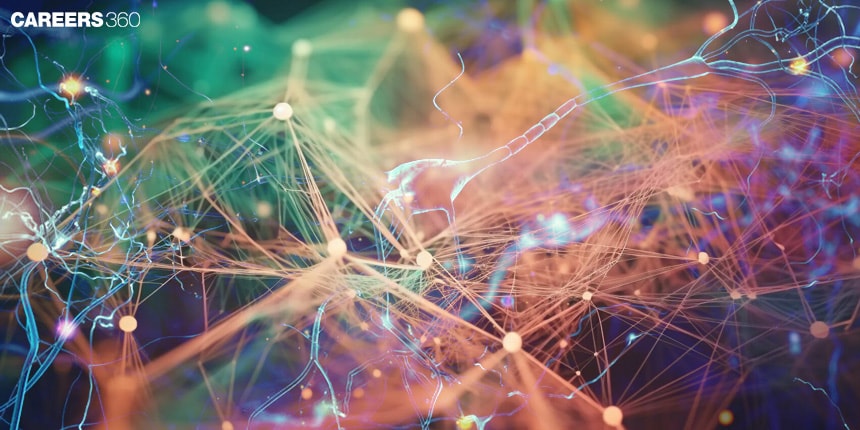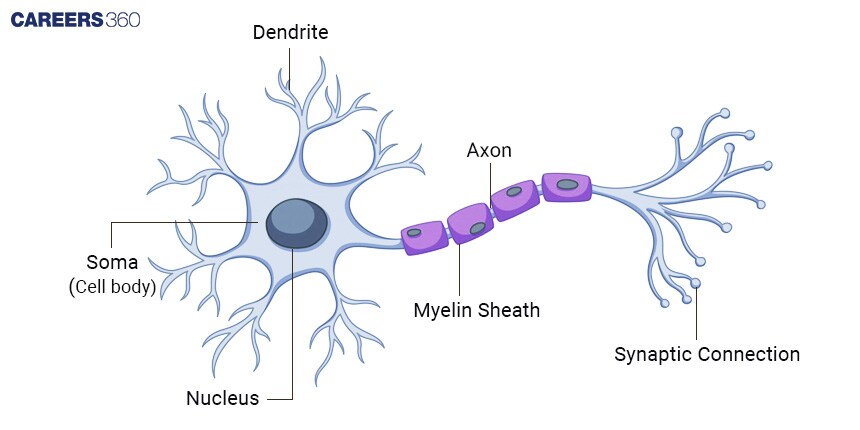Action Potential: Definition, Steps, Facts, Phases, FAQs
Definition Of Action Potential
The action potential is the brief fluctuation in the electrical potential that occurs in the membrane of a nerve cell (neuron) or muscle cell during the transmission of a nerve impulse or the contraction of a muscle fibre.
Action potentials are the main way the cells of the nervous system communicate over long distances and underlie nearly all higher brain functions like perception, action, and thought.
Cellular Basis Of Action Potential
The action potential is generated in the following step-by-step process initialised by the neuron membrane and ion channels:
Structure Of Neuron
The cell body, dendrites, axon
It depolarises due to the opening of sodium channels and repolarises due to the
NEET 2025: Mock Test Series | Syllabus | High Scoring Topics | PYQs
NEET Important PYQ's Subject wise: Physics | Chemistry | Biology
New: Meet Careers360 B.Tech/NEET Experts in your City | Book your Seat now
- Definition Of Action Potential
- Cellular Basis Of Action Potential
- Generation of Action Potential
- Propagation Of The Action Potential
- Factors Determining Action Potential
- Action Potential And Transmission Of Nerve Impulse
- Disorders Related To Action Potential
- Significance In Neurological Research
- Recommended Video On ‘Action Potential’

opening of potassium channels.

Resting Membrane Potential
Normally −70 mV because of ion concentration gradients, the sodium-potassium pump creates.
Generation of Action Potential
Action potential occurs in several phases:
Threshold Potential
Lowest membrane potential that can be used to initiate an action potential.
Depolarisation Phase
Open sodium channels, allow sodium ions to enter, the membrane is thus depolarised.
Repolarisation Phase
- Open potassium channels, allowing potassium ions to exit, hence repolarising the membrane.
Hyperpolarisation Phase
At this point, the membrane potential becomes slightly more negative than at rest.
Propagation Of The Action Potential
Conduction down the axon:
Saltatory Conduction Vs. Continuous Conduction
Saltatory conduction occurs in myelinated axons.
Here, the action potentials jump between the nodes of Ranvier.
Role Of Myelin Sheath
The myelin sheath insulates and speeds up the conduction by reducing ion leakage across the membrane.
Nodes Of Ranvier
They are small gaps in the myelin sheath, where action potentials are regenerated
Factors Determining Action Potential
There are several factors determining action potential kinetics.
Temperature
Higher temperatures increase the conduction velocity.
Axon Diameter
- The greater the diameter the less resistance, so conduction takes more rapidly.
Myelinisation
- Myelinated axons conduct impulses faster than unmyelinated axons because of the saltatory conduction in myelinated axons.
Action Potential And Transmission Of Nerve Impulse
Action potentials transmit messages through synapses:
Synaptic Transmission
Neurotransmitters are stored in the synaptic vesicles of axon terminals. When an action potential reaches the axon terminals, calcium ions enter the cell, the neurotransmitter gets released into the synapse between the neuron and muscle fibre through which the action potential produces muscle contraction.
Disorders Related To Action Potential
Multiple Sclerosis, where myelin is damaged and the signal does not travel properly.
Medications are used in diseases associated with the modulation of the ion channels or neurotransmitter release in neurological disorders.
Significance In Neurological Research
Action potential research methodologies, and trends:
Techniques within electrophysiology in recording an action potential.
Current Trends In Research
Studying synaptic plasticity, ion channel mutations, and neural circuitry.
Conclusion
Understanding action potential is fundamental to comprehending nervous system function, and ongoing research holds promise for advancing treatments for neurological disorders.
Recommended Video On ‘Action Potential’
Frequently Asked Questions (FAQs)
The action potential is a brief electrical impulse that travels along the membrane of a neuron or muscle cell, vital for communication between cells of the nervous system and muscle contraction.
In a neuron, an action potential is generated when the membrane potential, and thus polarity, becomes sufficiently depolarised in a segment of its membrane. Upon reaching the threshold, depolarisation opens voltage-gated sodium channels and sodium rushes into the cell.
An action potential has four phases: threshold potential, depolarisation, repolarisation, and hyperpolarisation, each with the involvement of specific changes in the movement of ions across the cell membrane.
Myelination is insulation for axons, allowing faster conduction of action potentials through saltatory conduction by jumping between the nodes of Ranvier, allowing a more rapid and efficient transmission.
Diseases like multiple sclerosis that affect the myelin may lead to disruptions of the conduction of action potentials, hence causing modifications in neurological behaviour. The pharmacological treatment is based on the modification of ion channel compositions and patterns in active neurotransmitter pathways in the Central Nervous System.
Also Read
30 Nov'24 10:55 AM
29 Nov'24 08:48 PM
29 Nov'24 06:52 PM
29 Nov'24 05:35 PM